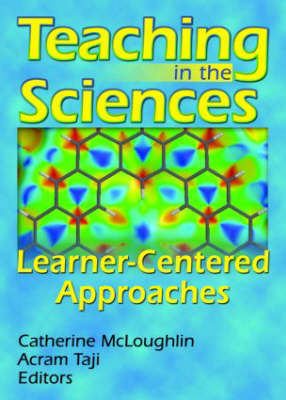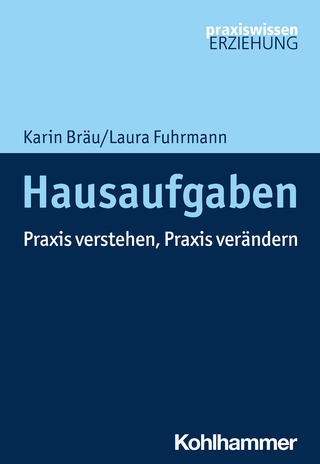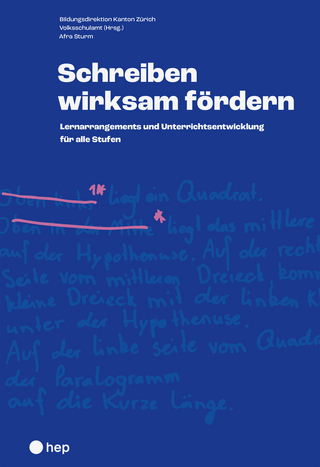
Teaching in the Sciences
Food Products Press,U.S. (Verlag)
978-1-56022-264-4 (ISBN)
- Titel ist leider vergriffen;
keine Neuauflage - Artikel merken
Over the past 20 years, a greater concentration on research aimed at both teaching and learning has revealed that chalk and talk teaching, copying notes, and cookbook practical lessons offer little challenge to students. Teaching in the Sciences: Learner-Centered Approaches steers the learning process away from traditional modes of instruction to a more student-centered, activity-based curriculum that makes science relevant, engaging, and interesting. This innovative book helps educators bring out the best in their studentsand themselvesby identifying and meeting students’ needs and providing environments that encourage active, strategic learning. Helpful tables and figures make complex information easy to access and understand.
Rather than focusing on teaching methods that merely deal in the content of life science, Teaching in the Sciences: Learner-Centered Approaches promotes a deep learning designed to develop critical and skilled learners. This collection of frank and thoughtful empirically based papers places greater emphasis on learning environments and social interaction patterns, assessment processes, and perceptions of students and teachers in a range of learning and teaching settings in the life sciences. The book presents strategies for mentoring and assessing students, assessments of learning outcomes, innovative approaches to curriculum design, constructivist approaches to teaching science, how to use technology to support learning, and practical examples of learner-centered teaching that mark important steps on a journey to transform the learning process.
Teaching in the Sciences: Learner-Centered Approaches examines:
using broadband videoconferencing for distance learning in tertiary science
assessing for learning in the crucial first year of university studies
using Information and Communication Technology (ICT) in molecular science
applying ICT to provide student feedback
teaching biostatistics in the environmental life sciences
developing metacognition and problem-solving skills in students
the evolution of metAHEAD, an online resource that supports strategy development and self-monitoring in problem solving
the development of a problem-based learning approach (PBL) for students in environmental science and natural resource management
and much more!
While largely centered on the context of undergraduate science instruction, Teaching in the Sciences: Learner-Centered Approaches is filled with valuable lessons for all educators working with students in the pursuit of powerful, effective, and lasting learning.
About the Editors
Contributors
Foreword (Stephen Dinham)
Introduction. Learner-Centered Approaches in the Sciences (Catherine McLoughlin and Acram Taji)
Chapter 1. Student-Centered Ecology: Authentic Contexts and Sustainable Science (Susan Barker)
Introduction
Challenges in Teaching Ecology
Experiential and Constructivist Approaches
Learner-Centered Teaching Materials: Promoting Sustainability
Fieldwork Teaching: Are Learner-Centered Approaches Possible?
Learning Indicators
Conclusion
Chapter 2. The Use of ICT in Molecular Science Student-Centered Learning: A Developmental Approach (Philip L. R. Bonner)
Introduction
ICT and Student Learning
CAL: A Learner-Centered Approach to Numeracy Problems
Evolving Evaluation
A Learner-Centered Approach to Laboratory Simulation
Conclusion
Chapter 3. The Undergraduate Life Sciences Laboratory: Student Expectations, Approaches to Learning, and Implications for Teaching (Janet Gorst and Susan Lee)
Introduction
A Review of the Literature
A Laboratory Study
Conclusion
Chapter 4. Developing the Metacognitive and Problem-Solving Skills of Science Students in Higher Education (Rowan W. Hollingworth and Catherine McLoughlin)
Introduction
Linking Problem-Solving and Metacognitive Skills
Teaching Problem Solving
The Need for Ill-Defined Problem Types
Design of Technology-Supported Metacognitive Training
METAHEAD: An Online Tutorial to Support Metacognitive
Conclusion
Chapter 5. The Use of Distributed Problem-Based Learning and Threaded Discourse (Lisa Lobry de Bruyn)
Introduction
Background and Literature Review
Description of Learning Activity
Assignment Structure and Learner Support
Evaluation of Learning Activity and Student/Instructor Experiences
Conclusion
Appendix
Chapter 6. Problem Solving in the Sciences: Sharing Expertise with Students (Catherine McLoughlin and Rowan W. Hollingworth)
Introduction
Background
Novices and Experts
Developing Self-Knowledge
The Need for Open-Ended Tasks
Recommendations for Teaching Problem Solving
Conclusion
Chapter 7. Student-Centered Learning Support in the Sciences (Robyn Muldoon)
Introduction
Supportive Pedagogies for Students in the Sciences
The Faculty Mentor Program at UNE
Conclusion
Chapter 8. Drowning by Numbers: The Effectiveness of Learner-Centered Approaches to Teaching Biostatistics in the Environmental Life Sciences (Debra L. Panizzon and Andrew J. Boulton)
Introduction
The Constructivist Framework: Two Common Threads
Challenging Alternative Conceptions in Biostatistics
Encouraging a Deep Approach to Learning
Conclusion
Chapter 9. Application of ICT to Provide Feedback to Support Learning in First-Year Science (Mary Peat, Sue Franklin, and Charlotte Taylor)
Introduction
Diversity of Australian First-Year Science Students
Supporting First-Year Science Students with Relevant Feedback
Provision of Online Feedback to First-Year Biology Students at the University of Sydney
Use of Feedback in the Development of Scientific Writing Skills
Use of Computer-Based Self-Assessment Modules Providing Feedback
Conclusion
Chapter 10. Assessing for Learning in the Crucial First Year of University Study in the Sciences (Frances Quinn)
Introduction
Dimensions of Assessment
Assessment Strategies for First-Year Science
Specific Assessment Techniques for Large First-Year Science Classes
Conclusion
Chapter 11. Exploring the Usefulness of Broadband Videoconferencing for Student-Centered Distance Learning in Tertiary Science (Robyn Smyth)
Introduction
A Conceptual Framework: Pedagogy, Philosophy, and Transitions
Teaching for Student Engagement in Science
Exploring the Usefulness of Broadband Videoconferencing
Developing a Conceptual Framework to Plan Potential Student Engagement
Conclusion
Index
Reference Notes Included
| Erscheint lt. Verlag | 20.6.2008 |
|---|---|
| Verlagsort | Abingdon |
| Sprache | englisch |
| Maße | 152 x 229 mm |
| Gewicht | 386 g |
| Themenwelt | Schulbuch / Wörterbuch |
| Sozialwissenschaften ► Pädagogik | |
| ISBN-10 | 1-56022-264-6 / 1560222646 |
| ISBN-13 | 978-1-56022-264-4 / 9781560222644 |
| Zustand | Neuware |
| Haben Sie eine Frage zum Produkt? |
aus dem Bereich


